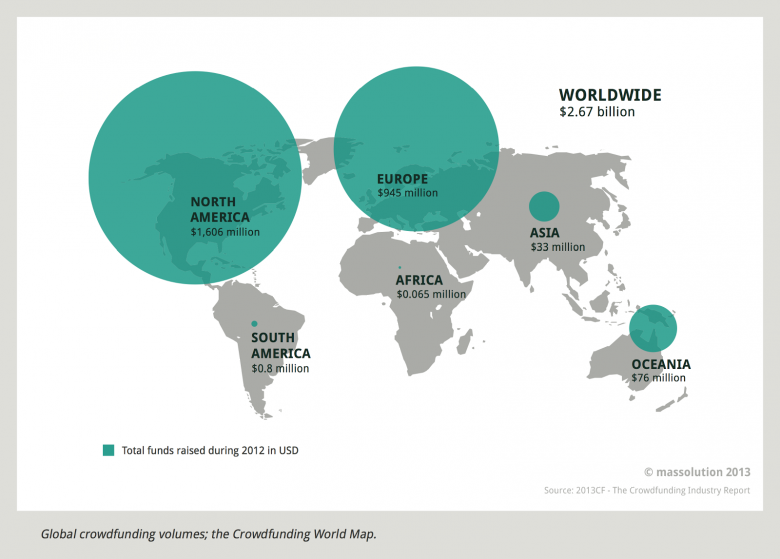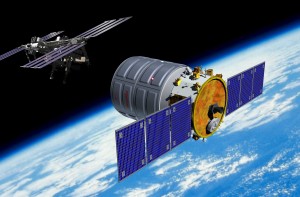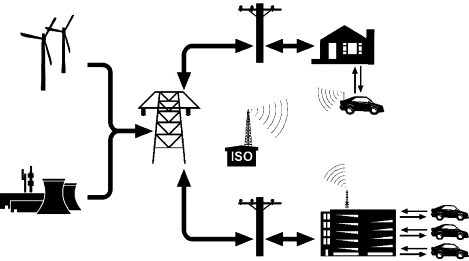Headlines that caught my eye in the last week:
- Private Company Launch Gets Ready to go to ISS and It’s Not SpaceX;
- Crowdfunding Raises $2.7 Billion for New Ventures in 2012;
- Advanced Biofuels Beginning to See Production Scale Up;
- V2B, V2H and V2G Technology Evolving in the Energy Mix;
- “Chiplets” May Alter the Way We Manufacture Electronic Devices.
Orbital Sciences Prepares Antares Rocket and Cygnus Spacecraft for ISS Mission
SpaceX isn’t alone in providing a commercial launch service to support the International Space Station (ISS). At least not anymore if Orbital Sciences is successful with its test flight of the Antares rocket along with a capsule that will simulate its Cygnus module and provide telemetry to ground stations while in orbit. The launch is planned for sometime in the next week from Wallops Island, Virginia, not Cape Canaveral, Florida. Orbital was one of three companies originally contracted by NASA to deliver supplies to ISS. If this demonstration flight succeeds and the subsequent real supply mission goes off without a hitch the U.S. will now have two private companies in the launch to low-Earth orbit business.
Antares uses rocket engines developed originally in the Soviet Union for its defunct Moon program. Apparently 50 of these engines were left in storage after the USSR collapsed and Orbital has been buying from the Russians and refurbishing them. The Cygnus capsule, an artist rendition seen below, can carry up to 2,000 kilograms (4,100 pounds) of cargo in its pressurized hold but unlike the SpaceX Dragon, is not designed for re-entry and recovery and will burn up in the atmosphere after making its deliveries to the ISS.
Crowdfunding Becomes a Great Source for New Technology Investment
In 2012 crowdfunding platforms raised $2.7 billion for more than one million projects (see distribution map below). Today more than 300 crowdfunding sites exist and forecasts are predicting a banner 2013 with as much as $5.1 billion raised by this no longer novel method for finding investment capital.
Massolution has been tracking crowdfunding and provides an industry report on this financial revolution being fed by global connectivity through the Internet. Crowdfunding models vary. In some cases money is donated in return for t-shirts, baseball caps, or a first cut of the new company’s product. In other cases the money is strictly a loan, or an equity investment. And in some cases new companies pay royalties based on a percentage of every unit sold in proportion to the amount invested.
Global Capacity for Biofuels Growing Rapidly
Many countries around the world, in their desire to lessen dependence on fossil fuels, have turned to biofuels. Conventional biofuels like ethanol and biodiesel have dominated the market to date with the United States, Brazil and the European Union the largest producers.
But now advanced biofuels are starting to appear in commercial volume. These fuels include cellulosic ethanol (not made from food crops but from switch grass and other non-edible growth), biobutanol, green diesel, synthetic gasoline (made from recycled plastic), and green jet fuel. Global biofuels are expected to grow from 127 billion liters (33.6 billion gallons) in 2013 to reach volumes of 231 billion liters (61 billion gallons) by 2023. Compared to conventional fossil fuels it remains only a small percentage of the total amount we humans burn to support our advanced industrial society.
What is V2B, V2H and V2G and Why is it Important?
Currently there are only a few plug-in electric vehicles (PEVs) on the market – the Chevrolet Volt, Nissan Leaf and a new model of the Toyota Prius, the most notable. Industry forecasts for 2013 indicate global sales of more than 200,000 vehicles, and the debut of three dozen new PEV models. PEV batteries can both receive and give and that’s what V2B, V2H and V2G is all about.
V2B stands for vehicle-to-building. V2H stands for vehicle-to-home, and V2G stands for vehicle-to-grid. These are technologies that provide energy storage capacity of benefit to vehicles, buildings, homes and the power grid. Numerous pilot projects are testing technology involving the integration of hundreds of PEVs with the energy infrastructure of homes, buildings and smart grids to allow for a two-way exchange. In the event of power outages energy stored in PEVs can keep lights on while repairs are made. And when the grid is working PEVs can plug in to get juiced up for the next day’s drive. Although still at the early stage in its evolution V2B, V2H and V2G technology is expected to continue to grow through the decade reaching $76 million annually by 2020.
Chiplets Provide New Way to Electronic Circuitry
What are chiplets? They are tiny electronic circuits no larger than a grain of sand. You can see them on display at the Palo Alto Research Center in California where the Defense advanced Research Projects Agency (DARPA) is funding research into these tiny silicon microchips. A chiplet on its own can be a transistor, a microprocessor, memory or sensor. When combined together chiplets can create a robot, a computer, a TV display, you name it.
Chiplets are printed to a surface using inkjet-like printers either 2D or 3D. They can be used to manufacture a prototype, custom fabrication or mass customization. Thousands if not millions of chiplets in combination with computer-aided design (CAD) has the potential to revolutionize manufacturing although it will be several years before we see devices made this way.
A Postscript
Every week brings new and exciting technologies and scientific discoveries. I write about them because I find them fascinating. With so many crises happening and so many dire predictions about our future, finding new discoveries and new technology breakthroughs gives me considerable hope that we will rise above the worst in ourselves.
I am glad to have you along as readers in this voyage of discovery and welcome your questions and comments because they add extra value to the content. So please keep coming back and thank you today for dropping by.
– Len Rosen














It is important that the push to produce biofuels does not impact on our food supply as has been occurring. The petroleum industry claims there will be loss of jobs. Therefore we must be able to counter this all-powerful fear-mongering lobby that has tremendous influence over governments. Included in our statistics should be the savings in costs to the environment and health care associated with the gaseous and liquid waste effluents associated with the petroleum and nuclear industries. The health costs are of great concern because the harm made be separated by decades from the times of exposure.
The evolution of biofuels is away from using food crops as the raw material. For example, Brazil produces biodiesel from sugar cane. To date the split between raw sugar production as a food additive and biofuels is about 50/50. In terms of corn produced for biofuel in the U.S., almost all of the product grown for this purpose is not varieties for human consumption. The division is between use for animal feed and biofuel production. Ultimately the move to cellulosic ethanol will change the source of raw materials from the ear on the corn to corn stover, the stalk and stubble of the corn plant. Switch grass will also be a major source for cellulosic ethanol. Today it is grown on wasteland and the idea is to intensify switchgrass growth in areas where farms do not plant food crops.
The petroleum industry is an investor in biofuel technologies but only marginally so. Yes they spread FUD to keep fossil fuels in the pipeline.